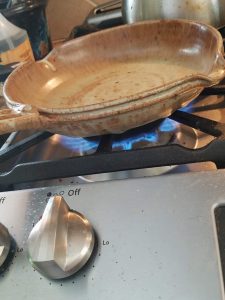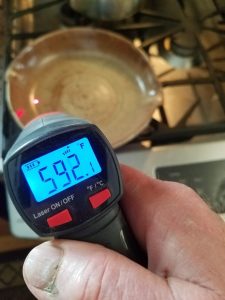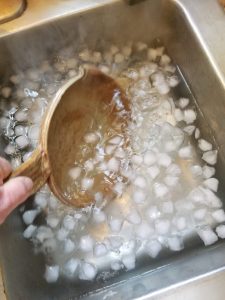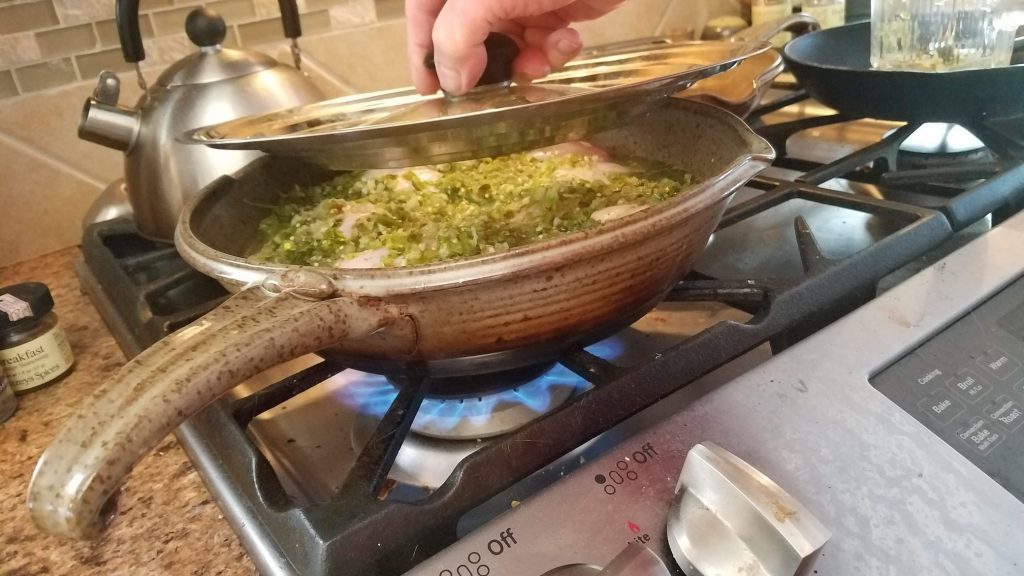HOW TO USE FLAMEWARE COOKWARE ON THE STOVETOP, OVEN, OR GRILL
There are Additional Instruction Sheets for each Type of Cookware
HEATING WITH YOUR FLAMEWARE POT – Gas, Electric, Glass-top, Grill, Broiler and Campfire, Induction (With Plate)
•No seasoning or special preparation is needed. Use it just as you get it.
•No soaking. No boiling or baking with water, oil or milk
•The glaze is essentially glass. A light spray or wipe with olive oil or cooking oil will prevent most sticking.
Over time the glaze builds up an oil “finish” just like a cast iron pan. I do an omelette everyday in a skillet and wipe clean.
While most cooking will take place at medium, there is no need to be “gentle” with your new pot.
Turn the flame to where you expect to be cooking and put the pot on. Thermal Shock is a thing of the past.
WHAT DO YOU DIFFERENTLY?
The main difference is that clay is an insulator. Heat will come through where you put it. Cooking on a coil burner electric, for instance, if you leave the pot in one place too much, you will begin to see a darkening where the coil is most frequently. On all stovetops, move the pot around to even out the heating. Or use some liquid, water or a liquid ingredient, especially early in the cooking process. The liquid helps spread the heat.
You can use a flame spreader, but it’s not necessary for any type of stove. For induction stoves, you will need the metal induction plate that came with the stove, or is available in kitchen stores. It converts the Induction wave energy to heat.
SLOW DOWN!
It will take a few minutes for the pot to come up to heat, or to cool off when heat is removed. DO NOT turn the heat way up, planning to back it off as the heat comes up. By the time you see the effects of the heat, it is already going to surge past the temperature you want. The rule I use is that once the heat goes in, it comes through to the food.
If you find foods are burning, it’s a sure sign you’re using too high an initial setting. This same is true of earthenware clay cooking pots. ( I have heard it suggested the reason people invented wine, was to have something to do while their clay pot heated up!)
CLEAN-UP
If you’ve controlled heat, there should be very little burning. If something does scorch, clean with any kind of scrubby you have, plastic, metal or scouring powder. The glaze is glass and won’t scratch.
If you do get some burned on food, it does happen, clean the pan with the scrubby, dry it and spray with EZ-Off or other oven cleaner. Use as directed, don’t breathe the fumes, let it sit 20 minutes or so, and scrubby it off. Then rinse and dry normally.
If it fits, you can certainly put your Flameware in the dishwasher.
WHAT ELSE?
•You can use any of your favorite utensils: wood, plastic, silicon and metal.
•The glaze will darken a bit over time from oils that get in the pores of the glaze.
•You will get some carbon darkening around the bottom, especially if you use gas. Don’t worry about it.
•Don’t drop it. While flameware is much less brittle than stoneware, it is ceramic and doesn’t take kindly to floors or hard knocks.
If it breaks, it can’t be glued because glues and epoxies won’t take the heat.
The handle won’t get hot unless flame is directly applied to it or creeps around the bottom. Grill pans and pieces
used in the oven, will get hot.
How Your NewClay Pottery Flameware Has Been Tested
After being put in the freezer overnight, it is put on a full gas flame, heated to 5-600 degF and then plunged in
an ice-water bath. If it will take this, it is Flameware All Ceramic Stovetop Cookware. Guaranteed.






Great observation. You did great job